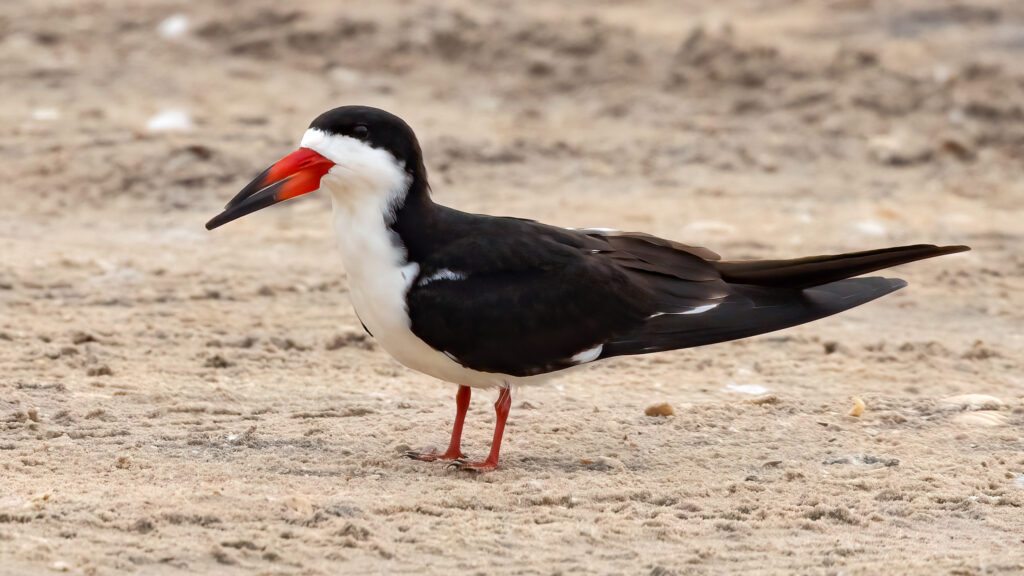Jim Gain’s tours through nature can be seen here.
So it’s a hot day in the San Joaquin Valley, the chores are done, you’ve got a few hours to yourself and you choose to visit one of the most unlikely places the average person might think of. Maybe only a dedicated birder could figure out why, and, even then, it would take some Sherlockian deduction.
It was “elementary” for Jim Gain that he would take advantage of a little down time and visit the Modesto Wastewater Treatment Plant* in Stanislaus County, Saturday, June 8. In addition to being one of the San Joaquin Valley’s finest nature photographers, Gain is an avid birder who keeps several lists of the birds he’s seen in various places, including a Stanislaus County list for his home county.
Gain also keeps track of unusual sightings statewide, and often tries to anticipate where a rare bird might show up next. So it was birder’s logic that led him to the large ponds where Modesto treats sewage.
“There had been some Brown Pelicans in San Joaquin County earlier this month, so I thought there could be a chance they were at the ponds,” said Gain, reflecting on the reasoning that led him to the treatment facility along the San Joaquin River near the southwest corner of Stanislaus County.

Brown Pelicans have been suffering a dire food shortage in their usual habitats along the California coast. As a result, some have wandered to less-frequented locations, doubtless in a search for food. Since there had been a few sightings at the treatment plant in the past, Gain thought it might be a good time to check whether any might be present Saturday. Most Stanislaus County list-keepers had missed the previous sightings, including Gain. He was also at number 299 on his county list.
Rounding that list off to 300 had been on Jim Gain’s mind ever since seeing an ultra-rare Roseate Spoonbill at the San Joaquin River National Wildlife Refuge a little over a month back, on April 27. The Spoonbill had been far north of its usual habitats and there had been no previous county records. The odds for encountering a Brown Pelican were actually far better, since there had been records going as far back as 1915, though few and far between. There had been no previous Stanislaus County records of Roseate Spoonbill.

The Modesto Wastewater Treatment Plant is one of the largest of its kind in the world. It has several large ponds and a storage basin the size of a small lake. After setting up his telescope and scanning the ponds in hopes of seeing a Brown Pelican, Gain was stunned to see a pair of Black Skimmers resting on a spit of dry land near the middle of one of the large ponds. He soon noticed one bird was larger than the other, which most likely meant the birds were a paired male and female; male Black Skimmers are significantly larger than females. Black Skimmers are generally seen much farther south. In fact, the last time Gain had seen one had been earlier this year, when he was in Costa Rica. There had never been a documented sighting for Stanislaus County.
Like the Roseate Spoonbill, the Black Skimmer has an unusual bill. Black with an orange base, the Skimmer’s lower mandible is longer than its upper. Skimmers feed by flying low above the water, literally “skimming” for small fish and other marine life. When the lower mandible encounters food, the upper mandible snaps shut and the Skimmer has its snack.

Always prepared with a big lens for his Canon camera, Gain managed to get several distant shots of the two Skimmers resting, flying, and feeding.
Though Black Skimmers had been seen and documented in more southern portions of the San Joaquin Valley on a few occasions, Gain knew this sighting was significant in a number of ways, including the possibility that it was part of a northward movement of birds brought about by climate change. It was the first Stanislaus County record.
Birder’s logic had led Jim Gain to a serendipitous find in his own home county, and he still had the sighting of a Brown Pelican to look forward to. All in all, it had been a very satisfactory day. Species number 300 was on his county list and many more days of birding lie on the road ahead.
*Access to the Modesto Wastewater Treatment Plant is by permission only. Visitors must provide five days’ notice and follow rules. See details here.

[…] Story continues […]
What would these 300, and more on his, and our, way, do, without Jim Gain, and, Eric Caine, a generous duo?
These birds would be out and about, with no one to make Valley Citizens perk up after seeing such specimens of grandeur.
Thank you, Jim for scheduling your visit
to the Modesto Wastewater Treatment Plant, days in advance. You are a dedicated specimen of mankind
As for you, Eric, you had to have dropped all of what you were doing, to focus on this post to prove true to the goal of THE VALLEY CITIZEN. Another, dedicated specimen of mankind is who and what you are.
I for one learned more about Modesto’s Wastewater Treatment Plant. Thank you for being so thorough.
Much appreciation goes both your ways.
[…] Story continues […]